Introduction
Societies and policymakers are increasingly concerned about the sustainability of choices associated with their production and consumption systems. Traditionally, policy has focused on mitigating the environmental and climate impacts of production or industrial processes. Production/consumption systems are strongly linked, and production systems not only respond to but also shape demand through marketing strategies and advertising.
This briefing focuses on consumer behaviour. It outlines how increasing circular economy-consistent consumer behaviour is not only about choosing the right product, but also how this behaviour can influence decisions upstream (e.g. material use and design of products) and downstream (e.g. recycling or reusing products). The briefing also explores how policies can enable more circular economy-consistent consumer behaviour by addressing the factors mainly responsible for shaping consumer choices. This briefing is based on a detailed technical report.
As consumers, we are faced with consumption choices every day. In making choices, our decisions favour actions representing either circular or linear consumer behaviour. For example, if we choose to buy unpackaged vegetables, we save the material resources used in producing the packaging, and when we service our cars regularly, we maintain the value of the parts and materials in the car.
In assessing the differences between linear and circular consumer behaviour more systematically, specific points in a product’s life cycle are important, as consumer choices at these points have the greatest potential to increase the product’s circularity: the point of acquiring a product, the use phase and the end-of-use/-life stage (Figure 1).
Factors affecting consumer behaviour
Policymaking in Europe increasingly recognises the value of influencing consumers to make more environmentally sustainable choices, while at the same time respecting their right to choose. This is because policies addressing the production aspect of production/consumption systems are often inadequate to address the growing demand for resources, despite advances in resource efficiency. However, to design effective consumer policies, the factors shaping consumer behaviour need to be properly understood so that policies address them successfully.
Although there is no scientific consensus on the factors shaping consumer behaviour, the bulk of existing research points to these categories of factors shown in Figure 2.
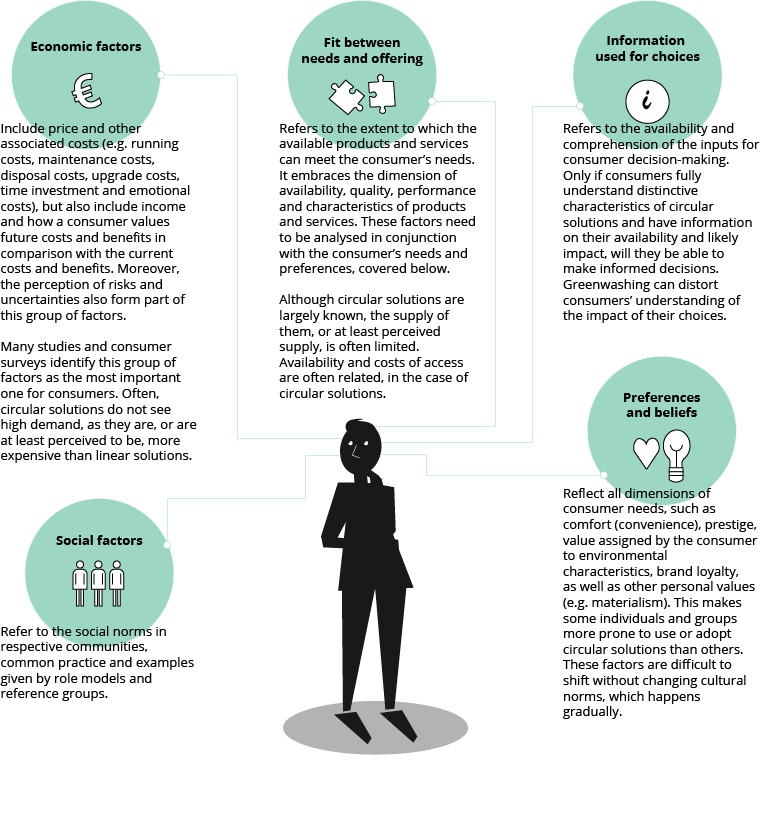
These categories are linked and overlap one another. There is a general scientific consensus that economic factors are often the most important in consumer decision-making, while the ranking of the other factors is less clear.
Social factors, preferences and beliefs touch upon individual psychology and are thus considered the most difficult to influence or change by policies, as our values and norms are created by the processes that shape our personality. Nevertheless, social factors are heavily targeted by manufactuerers’ long-term marketing strategies. Examples also exist of policies addressing social factors through awareness-raising communication campaigns.
Behavioural insights and biases explain how behaviours are shaped by psychological factors. Examples of insights and biases relevant for circular economy-consistent behaviours include:
- The status quo bias, which is a cognitive bias that makes people prefer the current state of affairs over change (i.e. people tend to prefer behaviours, items and settings that are familiar to them). This helps to explain why habits and past behaviour can stand in the way of adopting novel circular behaviour patterns.
- The endowment effect, which describes how people tend to value items that they own (i.e. that could be lost or given up) more than they would if they did not belong to them. This effect helps to explain why people hold on to their belongings even if they are not using them and why ‘product attachment’ may incentivise repair.
The following framework (Figure 3) provides examples of contextualising how these behaviour-shaping factors nudge decision-making towards more or less circular choices (for the complete framework, please see the underpinning technical report).
How can policy promote consumer behaviour consistent with circular economy principles?
Countries and the EU are already active in implementing measures to make circular economy-consistent choices more attractive for consumers (see, for example, the European Commission sustainable products initiative), mainly focusing on providing information through labelling. More recently, the economic factors and the fit between needs and offering are increasingly being addressed by policymakers at both national and EU levels. Many countries have put in place tax breaks for certain repair services, trying to make circular options more economically attractive for consumers. The upcoming EU legislation on ensuring the ‘right to repair’ for certain consumer products is an example of fitting goods on the market to consumer needs.
However, policymakers generally perceive that it is difficult to change social factors, personal beliefs and attitudes through policy tools. Private sector marketing strategies aim to shape these factors through long-term approaches and tools such as advertising or using social media influencers, often promoting linear product solutions (e.g. fast fashion). Policymakers can potentially affect these factors too by developing policy tools that directly address them (see the examples in Figures 4-6) or by limiting the effect of marketing strategies promoting linear products (e.g. by circular/linear product labels or by scrutinising the environmental claims made by marketing campaigns).
Potential consumer behaviour nudging options to be explored vary according to the type of policy instrument and the level of intervention in consumer choices (e.g. from simple information provision to restrictions and bans). For a policy initiative to be effective, it needs to establish a clear link between the proposed measure and the factors shaping consumer behaviour, while the mechanism influencing more circular economy-consistent behaviour needs to be investigated.
This section provides examples of policy measures addressing each of the behaviour-shaping factors, although there may be measures addressing more than one factor at a time. It is important to note that the examples below focus on short-term consumer behavioural change. A long-term behavioural change strategy is more resource intensive but is also more effective and can be implemented through education.
- Economic
- Fit between needs and offering
- Information used for choice
- Social
Policies in this area aim to reduce the price of circular alternatives or, conversely increase the price of linear alternatives. Such policies include taxes, subsidies for specific circular activities, loan programmes or higher visibility for the lifetime costs associated with a product.
Figure 4. Policy measure: taxation favouring circular alternatives
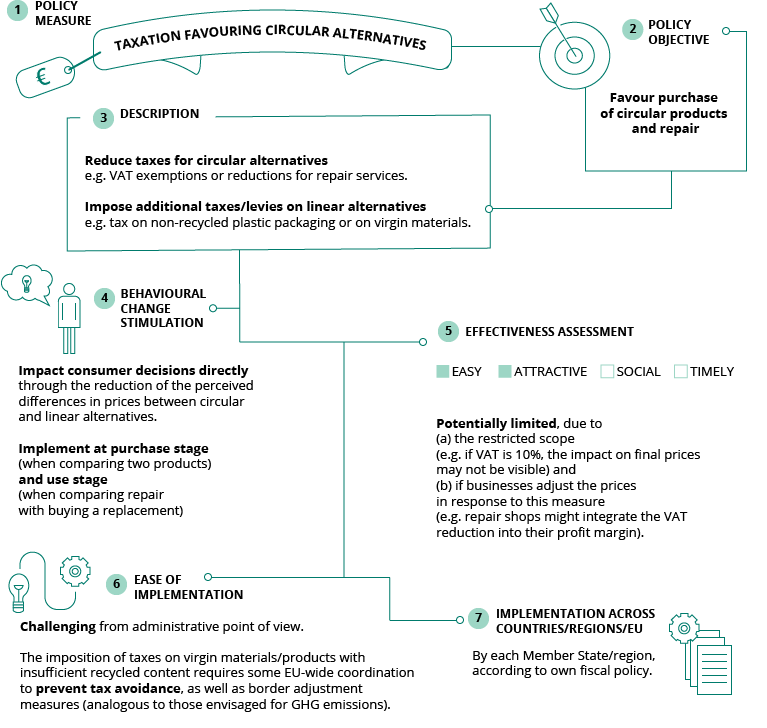
Note: GHG, greenhouse gas.
These types of policies aims at making circular alternatives more convenient or more adjusted to consumer requirements. Examples of these policies include eco-design requirements for repairability or to ensure availability of spare parts and repair services.
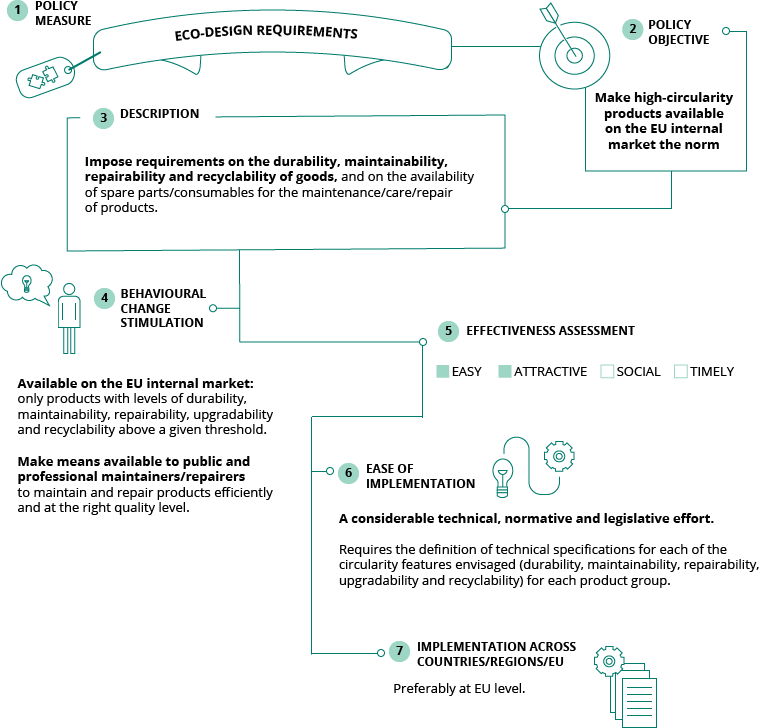
Policies in this area aim at providing adequate information to consumers about the consequences of their choices or the products’ performance so that they can make informed choices and reduce consumers’ uncertainty. Examples include communication campaigns or eco-labels.
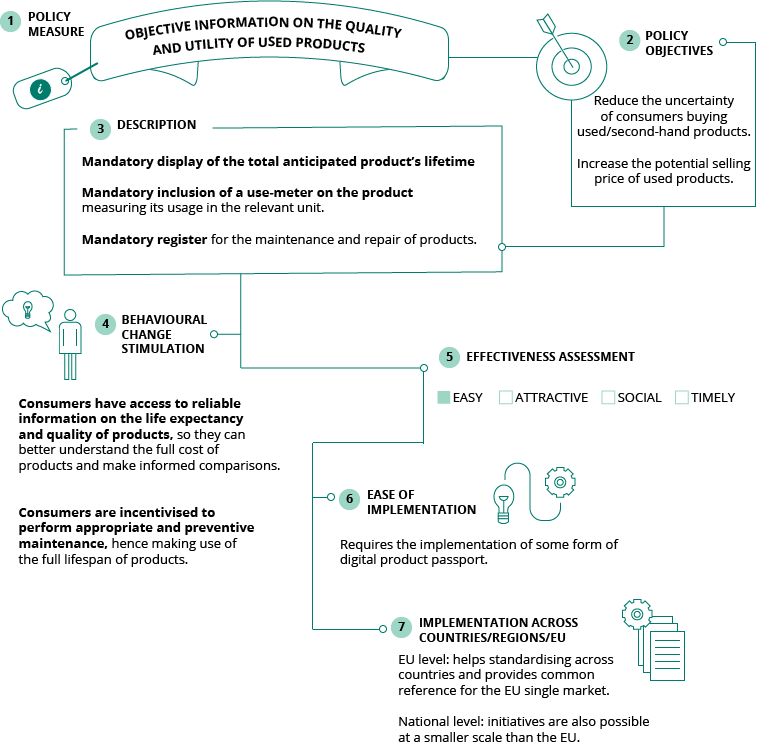
Policies addressing these factors are limited as changes of preferences are perceived difficult from the outset. However, policies do have the opportunity to intervene mainly by enhancing product attachment, defining social norms and paradigms or providing positive feedback for circular behaviours.
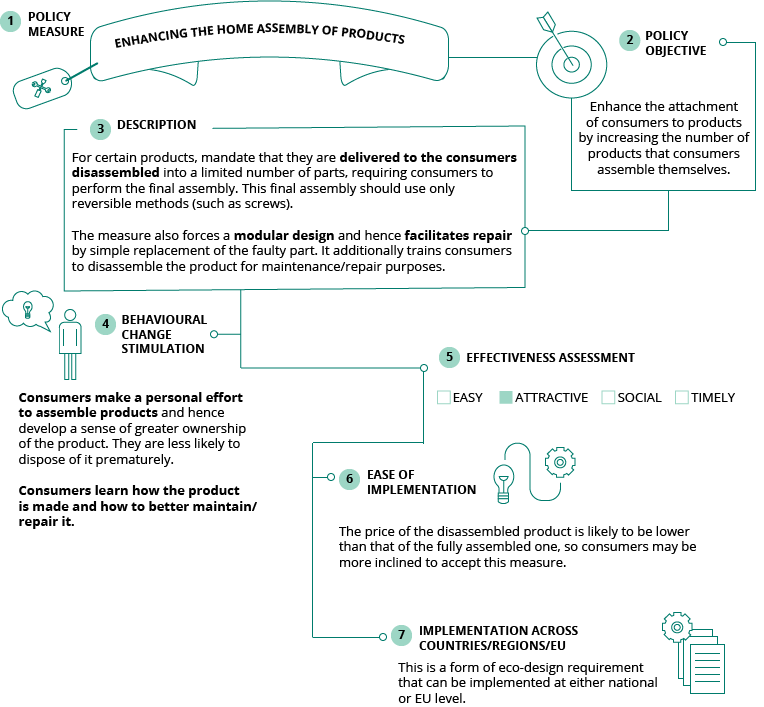
Identifiers
Briefing no. 07/2022
Title: Enabling consumer choices for a circular economy
EN HTML: TH-AM-22-007-EN-Q - ISBN: 978-92-9480-470-9 - ISSN: 2467-3196 - doi: 10.2800/484823
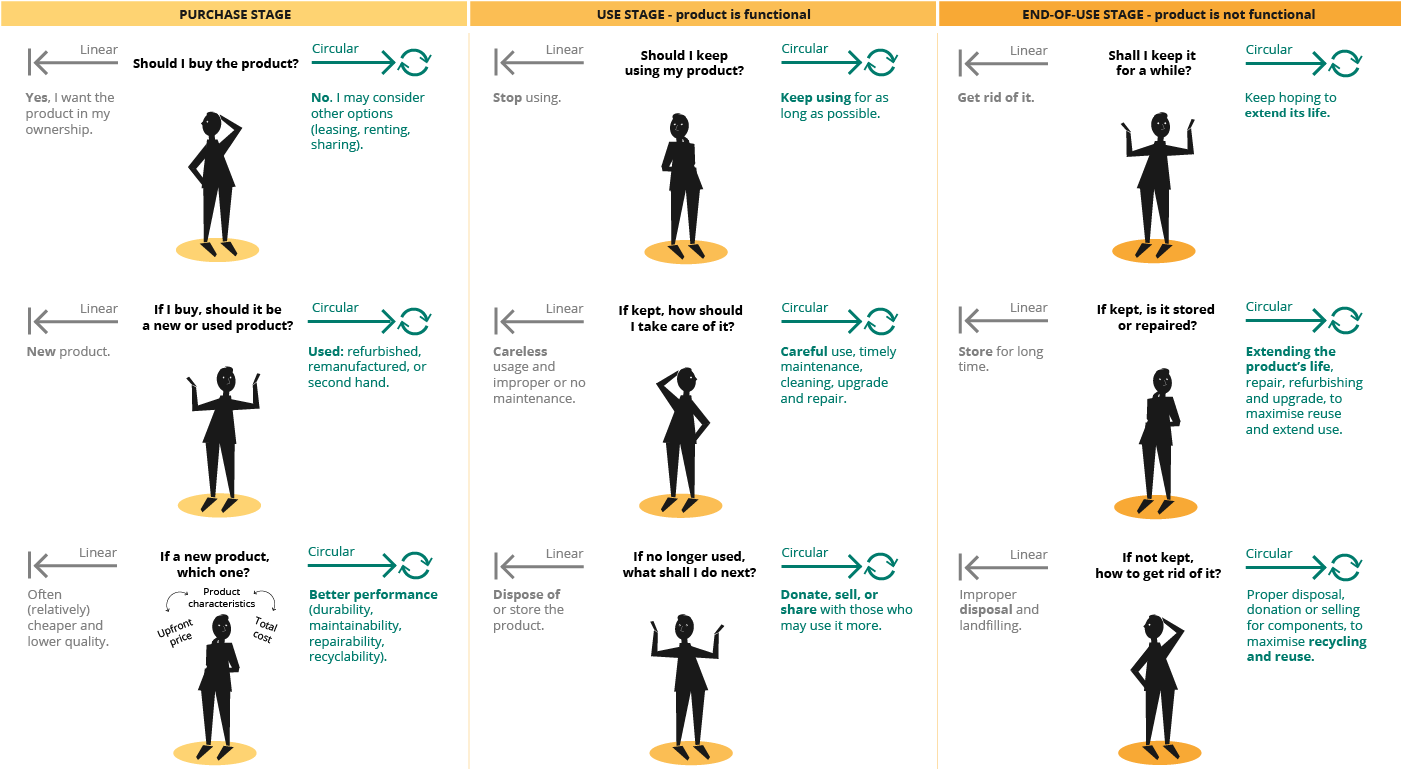

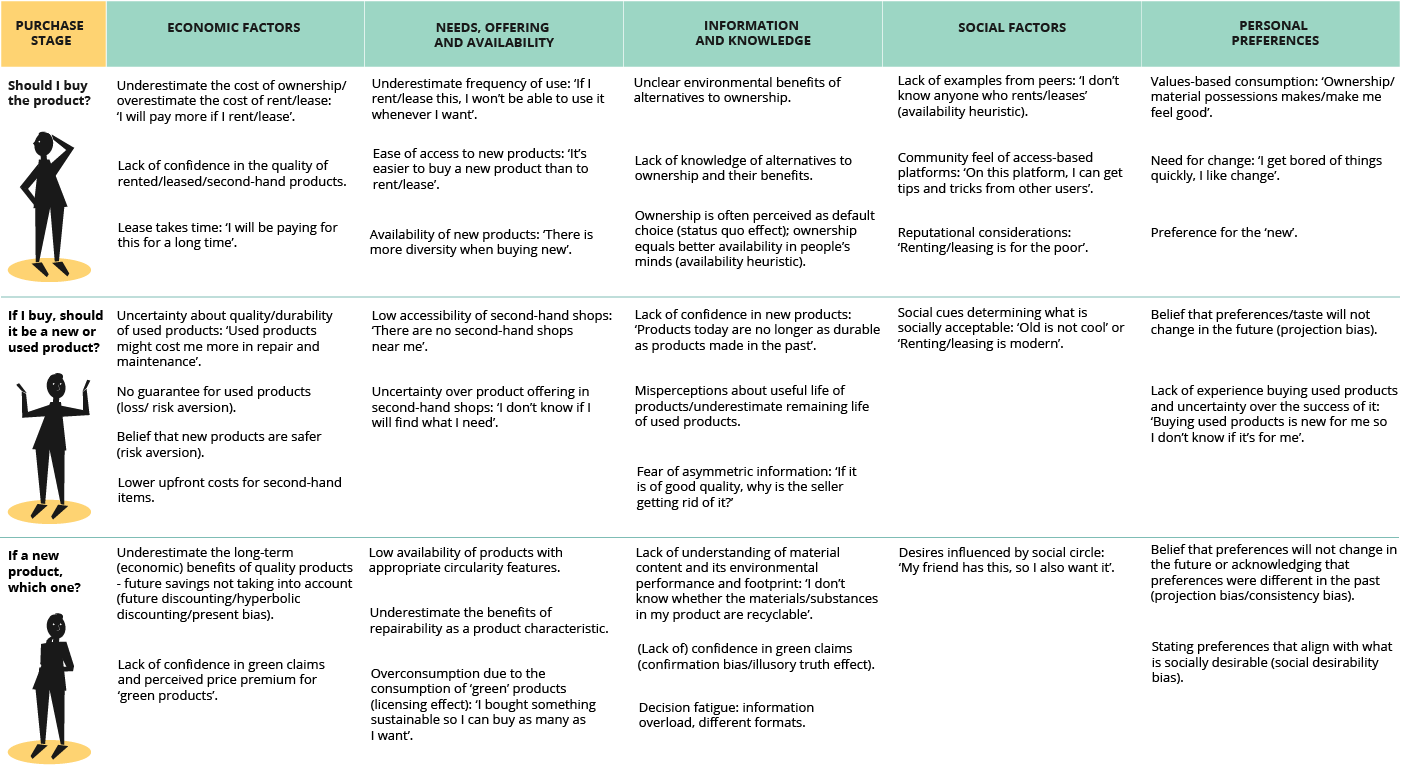
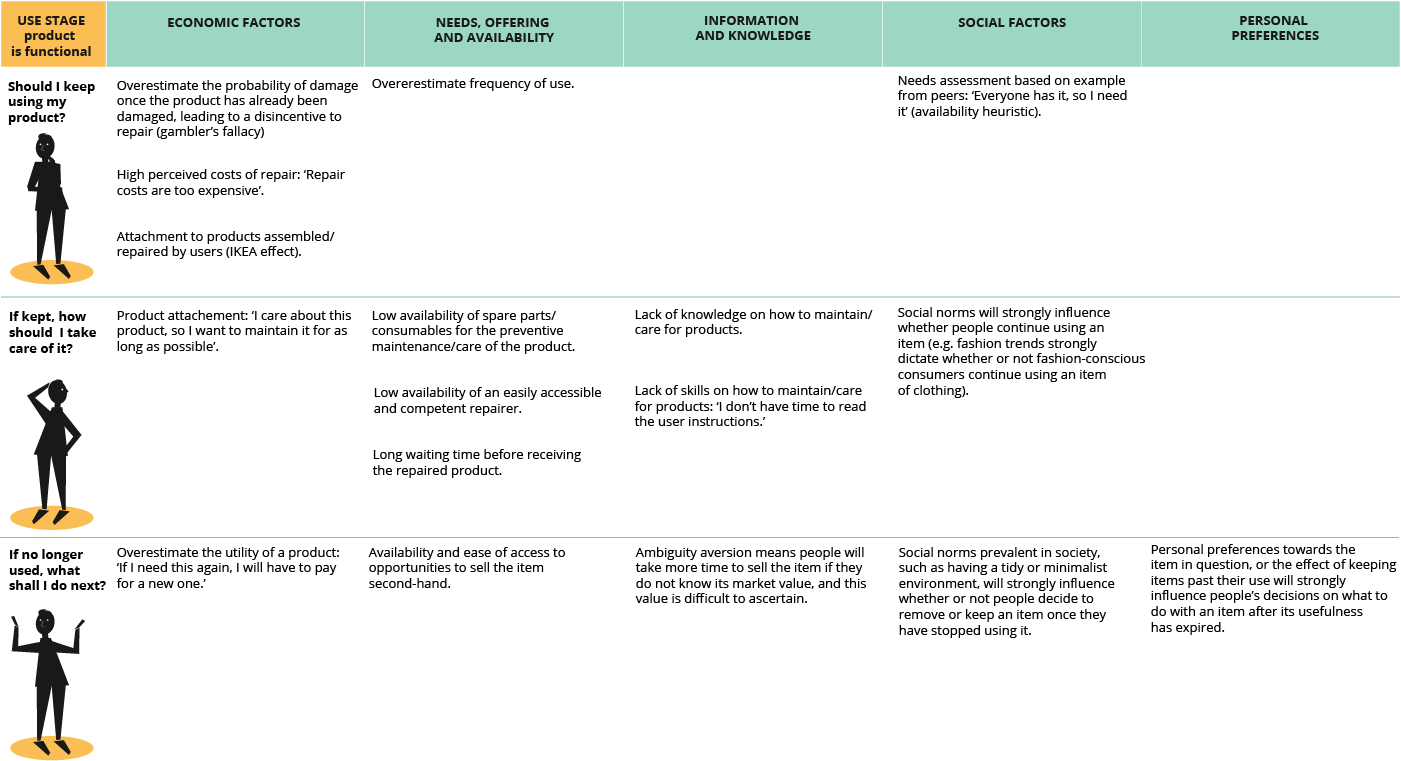
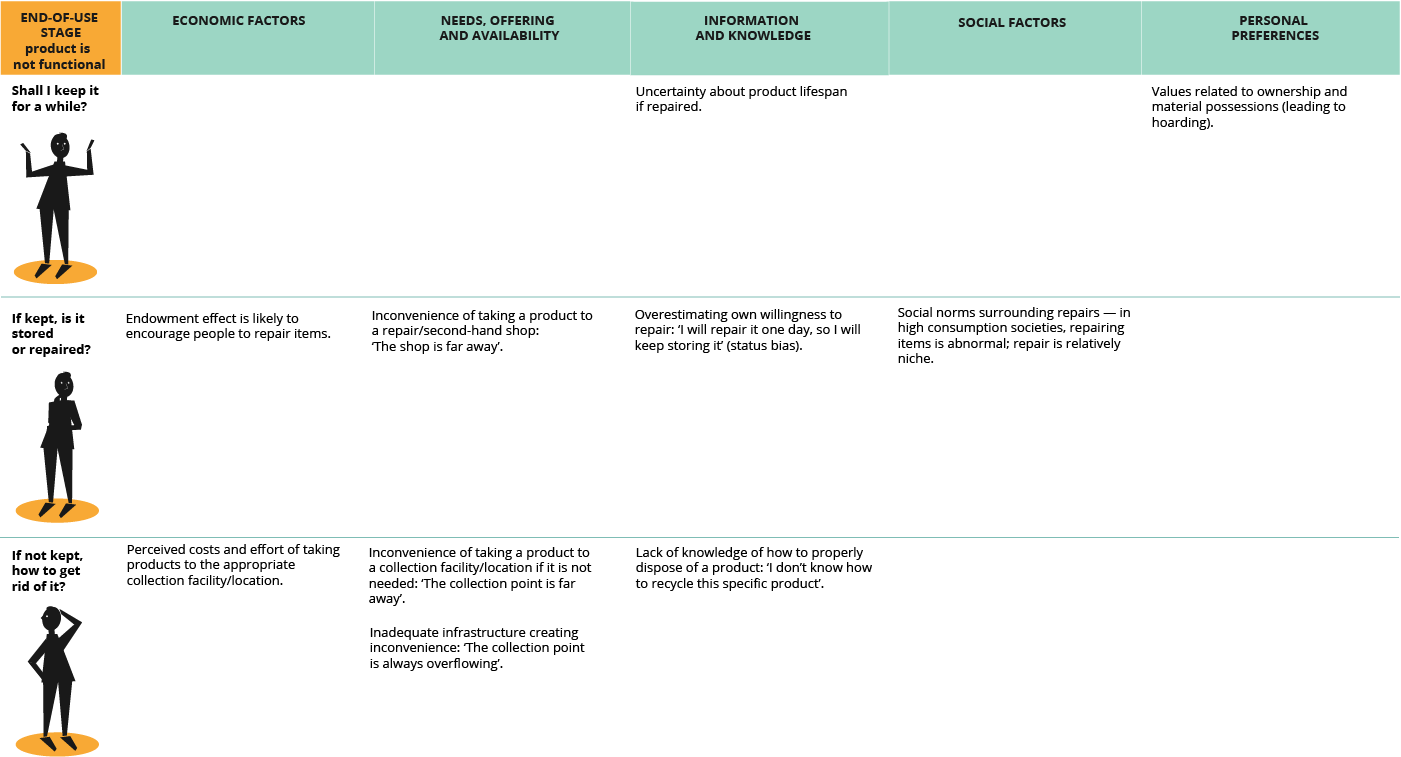




Document Actions
Share with others